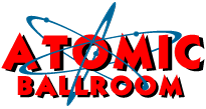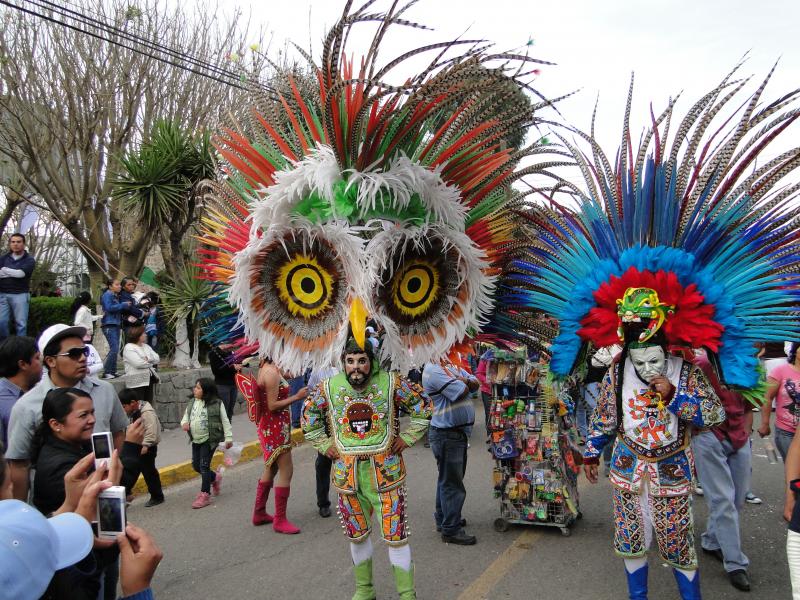If you thought that you had to travel half way around the world in order to take part in a Carnaval parade and festival, think again. Just a few hours away lies an array of costumed revelry, music and dance with the San Francisco Carnaval. Not to be confused with an American carnival or fair, with rides and cotton candy, this type of Carnaval comes from the Latin word carnevale, meaning “put away the meat”. Which symbolized the week just before Lent when Catholics could not eat meat and would throw wild costume festivals. Starting hundreds of years ago, this tradition spread through Europe and took on a whole new life in the Americas and Caribbean when it was combined with African culture and traditions. Today it is celebrated in countries all over the world.
Since 1979, the Carnaval Parade has been an annual tradition in San Francisco, California, that has grown larger year after year into the largest on the West Coast, and one of the largest in the country. Initially celebrated in February (just like in Brazil and other places where it follows Lent), it was ultimately moved to the end of May during Memorial Day weekend, in part due to the more ideal weather conditions at that time of year. Originating with the idea of celebrating Caribbean and Latin American dance, music and art locally as it is in other parts of the world, it has since become a major showcase for featuring talent and creativity to the masses. For two full days, eight blocks along San Francisco’s Harrison street close to traffic and become filled with colorful art, music, dance and countless booths stocked with a combination of the aforementioned, and international food and treats of course! The streets are book-ended by large stages on different sides which feature back to back musical and dance performances throughout both days.
In addition, the main highlight is on Sunday, when a crowd of over 400,000 line the streets of San Francisco’s Mission District to watch thousands of participants play music, dance, march or ride along with their decorated floats in the parade for over 13 city blocks. The end of the parade route flows into the entrance of the Harrison street festival. (Which then continues the next day in a similar yet smaller festival across the bridge in Oakland). For months leading up to the parade and festive weekend, Carnaval contingents (groups) gather together to start planning their groups’ costumes, float, music and choreography for the parade. As they proceed along the parade route they are also judged by a panel of experts on their Carnaval spirit, originality, and how well their groups costumes, float, music and dance routine convey that current years theme. This years theme is Agua Sagrada, (“Sacred Water” in Spanish) – Every drop Counts, which is fitting considering the current state of severe drought affecting California and many parts of the world as a whole. Cash prizes are awarded to the top finishers in each of the categories. Each year the parade is lead by a newly crowned King and Queen of Carnaval along with a parade Grand Marshal. This years Grand Marshal is iconic singer-percussionist Shiela E, daughter of legendary Latin musician Pete Escavedo, who is also one of this year’s honorees.
Although the majority of groups represent a particular ethnic or cultural theme, there are also a handful of groups which represent a specific cause, or a business or community organization. Since the Carnaval’s inception, community has been a prevailing theme. In an area already known for its long standing tradition of activism and let’s face it – hippies, the parade and street festivals draw people from all walks of life and unify them in peace and harmony in such a profound way. Carnaval has also served as a kind of community outreach through its work with organizations like the Mission Cultural Center for Latino Arts, which helps keep at risk kids out of trouble by providing funding and other resources for the arts, giving low income families opportunities to get involved, where they otherwise may not have been able.
This lively, festive event brings communities together, and not only through dance and music, but also in areas like visual art and design; sponsorship and support from businesses; and sharing of culture and preservation of heritage. The community also comes together literally by way of some residents in the area who share the Carnaval spirit by opening their homes to parade goers; sometimes by offering snacks and fluids, or by playing music and having their private house parties spill out into the streets, becoming part of the greater neighborhood block party – which is the street festival . Most of the local residents can be seen hanging outside of their upper story windows cheering on the parade goers as they pass by below. This is something not as commonly found in such a large metropolitan city, but is a special thing about the San Francisco Area, especially at this time of year.
You don’t have to be a dancer, musician or performer of any sort in order to take part. You could sponsor a group, or volunteer in a number of ways, even just by handing out water during the parade. Or you can always just join the crowd of thousands lined up along the streets to watch, cheer and dance on your own terms. This free event has a little something for everyone, and is fun for the whole family!

